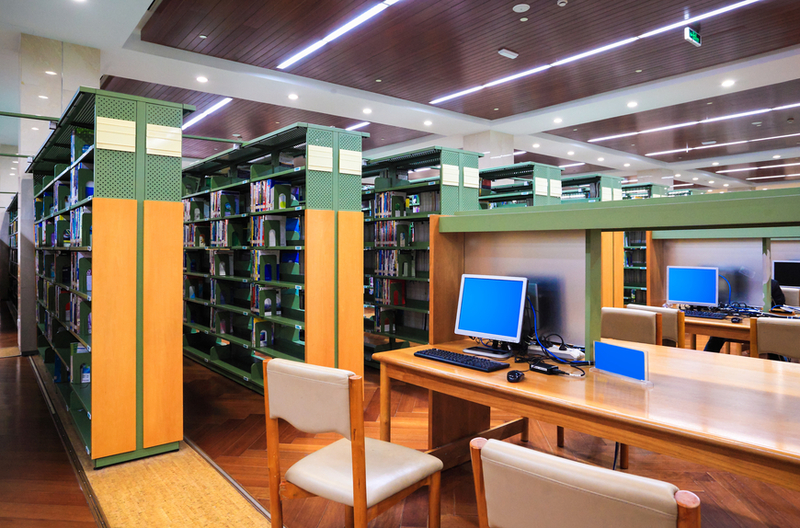Universal Design
Universal Design
Related Objectives
· Develop awareness of the principles of Universal Design (UD)
· Understand how elements of Universal Design apply to library settings
· Evaluate the accessibility of your library
Introduction to Universal Design

The term Universal Design (UD) refers to the process of creating products and facilities that are usable by a wide range of people with varying ability levels. It is intended to benefit all users by making interaction and use comfortable, safe, and easy. Items and environments in which Universal Design principles are implemented do not require adaptations or modifications in order to be used.
There are seven principles of UD, made available by the Center for Universal Design (Copyright © 1997 NC State University, The Center for Universal Design, 1997*):
PRINCIPLE ONE: Equitable Use
The design is useful and marketable to people with diverse abilities.
PRINCIPLE TWO: Flexibility in Use
The design accommodates a wide range of individual preferences and abilities.
PRINCIPLE THREE: Simple and Intuitive Use
Use of the design is easy to understand, regardless of the user's experience, knowledge, language skills, or current concentration level.
PRINCIPLE FOUR: Perceptible Information
The design communicates necessary information effectively to the user, regardless of ambient conditions or the user's sensory abilities.
PRINCIPLE FIVE: Tolerance for Error
The design minimizes hazards and the adverse consequences of accidental or unintended actions.
PRINCIPLE SIX: Low Physical Effort
The design can be used efficiently and comfortably with a minimum of fatigue.
PRINCIPLE SEVEN: Size and Space for Approach and Use
Appropriate size and space is provided for approach, reach, manipulation, and use regardless of user's body size, posture, or mobility.
Guidelines associated with each of the principles describe the design elements that it requires. For example, one way to guarantee "simple and intuitive use" is to consider individuals' varying levels of literacy skills in the design of the library. This might mean labeling the shelves in the library with both words and pictures.
Read the 30 guidelines associated with the seven UD principles at The Principles of Universal Design (1997), made available by the Center for Universal Design. For more detailed information and examples, check out The Universal Design File (Story, Mueller, & Mace, 1998).
Based on your understanding of the UD principles, think about ways in which your library environment may be inconsistent with Universal Design and how you might address these issues. Indicate which of the principles corresponds to each of your ideas. You can see some possible problem areas by following the link.
References
Story, M.F., Mueller, J., & Mace, R. (1998). The Universal Design File: Designing for people of all ages and abilities. Raleigh, NC: NC State University, The Center for Universal Design.
*Copyright © 1997 NC State University, The Center for Universal Design. The Center for Universal Design (1997). The Principles of Universal Design, Version 2.0. Raleigh, NC: North Carolina State University. Compiled by advocates of Universal Design, listed in alphabetical order: Bettye Rose Connell, Mike Jones, Ron Mace, Jim Mueller, Abir Mullick, Elaine Ostroff, Jon Sanford, Ed Steinfeld, Molly Story, and Gregg Vanderheiden.
Note: The Principles of Universal Design were conceived and developed by The Center for Universal Design at North Carolina State University. Use or application of the Principles in any form by an individual or organization is separate and distinct from the Principles and does not constitute or imply acceptance or endorsement by The Center for Universal Design of the use or application.
